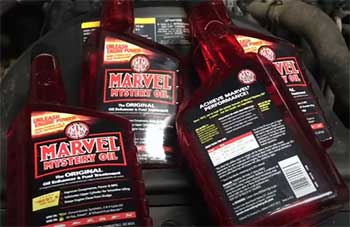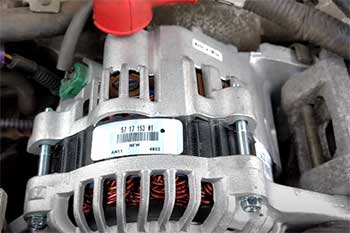Alright, folks, if you’re in the market for a suspension upgrade that won’t break the bank but still delivers a punch, let me put Godspeed coilovers on your radar. I’ve been tinkering with cars for years, and these bad boys caught my eye for their affordability and surprising performance.
Whether you’re cruising the streets or dreaming of a slightly lower ride, I’m here to tell you why you should seriously consider grabbing a set.
Trust me, after my experience with them, I’m convinced they’re a steal for the right kind of driver—so stick with me, and I’ll walk you through it all!
My Wild Ride With Godspeed Coilovers
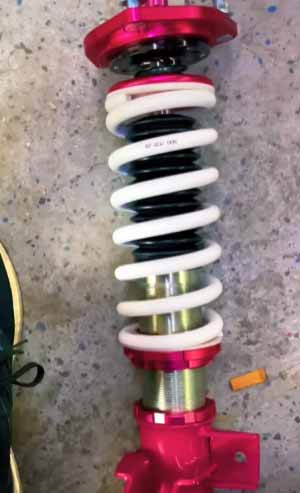
Let me take you back to last summer when I finally decided to slap some Godspeed MonoSS coilovers onto my trusty 2015 Honda Civic Si.
I’d been running stock suspension for way too long, and the body roll through corners was starting to feel like a rollercoaster I didn’t sign up for.
After scouring forums and watching one too many YouTube reviews, I took the plunge and ordered a set for about $675.
The box arrived, and I’ll admit, I was a little skeptical—could something this affordable really hold up?
Installation day was a sweaty mess in my garage.
I’m no pro mechanic, but with a buddy’s help and a couple of cold beers, we got them bolted on in a few hours.
The first thing I noticed was how slick they looked—those anodized shock bodies and bright springs screamed “upgrade.”
I set the dampening to about halfway (8 clicks out of 16) and dropped the ride height about an inch and a half. The goal? A tighter feel without scraping my bumper on every speed bump in town.
The maiden voyage was a revelation. I took my usual twisty backroad route, and holy smokes—the car felt glued to the pavement. No more swaying like a boat in a storm; it was crisp, responsive, and dare I say, fun.
Even on the highway, the ride wasn’t jarring, which surprised me for a budget coilover. Sure, I felt the potholes a bit more, but it was a trade-off I could live with.
Over the next few months, I tweaked the settings—softened them up for daily commutes, stiffened them for weekend canyon runs—and found a sweet spot that made me grin every time I got behind the wheel.
Were they perfect? Nah, but for the price, they punched way above their weight.
The Upside of Godspeed Coilovers
Let’s talk about what makes these coilovers a win in my book—and trust me, there’s plenty to love if you’re the right kind of driver.
- Bang for Your Buck
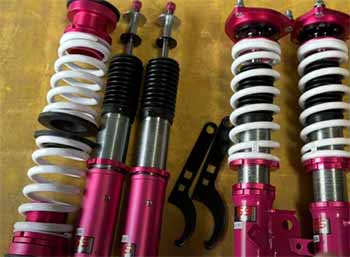
You can’t argue with the price tag.
I paid less than $700 for a full set, and that’s a fraction of what you’d shell out for big-name brands like KW or Bilstein.
For me, that meant more cash left over for other mods—like a sweet exhaust or some new tires.
Godspeed delivers adjustable height and dampening at a cost that doesn’t make you wince, which is a godsend if you’re building a car on a budget.
- Decent Ride Quality
I was braced for a bone-rattling experience—cheap coilovers often get a bad rap for that—but these surprised me. On the softer settings, my Civic felt almost as comfy as stock on smooth roads. Sure, it’s not a luxury sedan, but for daily driving, it’s totally manageable.
When I crank the dampening up, it transforms into a corner-carving machine without feeling like I’m riding a skateboard over gravel.
- Customization on Tap
The adjustability is where Godspeed shines. With 16 levels of dampening and ride height tweaks via the shock body, I could dial in exactly what I wanted. Want to slam it for looks?
You can. Prefer a milder drop for practicality? That’s an option too. I spent a weekend playing with settings, and it felt like I was tuning a video game car—except this was real life, and I loved the control it gave me.
- Solid Build for the Price
The construction isn’t half-bad either. The monotube design, carbon steel shock bodies, and high-strength springs held up through rain, heat, and my less-than-gentle driving style.
After six months, there’s no leaks or weird noises, which I half-expected from a budget brand. They’re not indestructible, but they’ve got enough grit to handle a spirited daily driver like mine.
The Downsides of Godspeed Coilovers
Now, I’m not here to sugarcoat things—Godspeed coilovers aren’t flawless, and I ran into a few quirks that might make you think twice.
- Durability Questions
Here’s the rub: I’m not convinced these will last a decade. Some folks online say their shocks blew out after 20,000 miles, and while mine are still kicking, I can’t help but wonder when the clock might run out.
They’re not fully rebuildable, so if something goes kaput, you’re likely buying a new set. For a beater car or short-term project, that’s fine—but if you’re in it for the long haul, it’s a gamble.
- Stiffness Can Sneak Up
Even on the softest setting, they’re firmer than stock. I noticed it most on beat-up city streets—every crack and bump sent a little jolt through the cabin.
It’s not unbearable, but if you’re hauling grandma around or live where roads look like the moon, you might find it a bit much. I got used to it, but it’s not for everyone.
- No Fancy Extras
Don’t expect premium features like camber plates on every model or super-precise damping clicks. My MonoSS set came with front camber plates, which was clutch for alignment, but the rear adjustments are basic.
Compared to pricier coilovers, you’re missing some bells and whistles. For me, it’s enough, but hardcore track rats might feel shortchanged.
- Reputation Roulette
Godspeed’s rep is a mixed bag. Some swear by them; others call them junk. I’ll be honest—buying them felt like rolling the dice. There’s not as much buzz or trust as with brands like BC Racing, so you’re banking on your set being a good batch.
So far, I’ve been lucky, but the uncertainty lingers.
Keeping Your Godspeed Coilovers Happy: Maintenance Tips
Alright, you’ve got your coilovers installed—now how do you keep them from turning into a rusty mess or a squeaky nightmare? I’ve learned a few tricks to keep mine in fighting shape, so let me share the gospel.
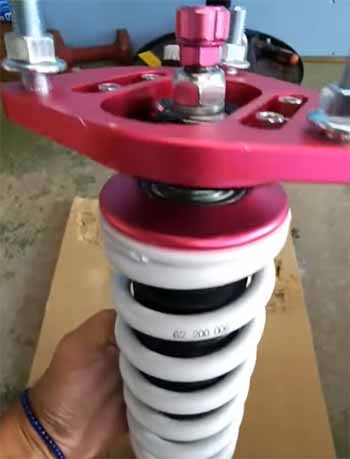
- Regular Cleaning Is Key: Road grime is the enemy. After a wet winter, I noticed salt and muck building up on the threads and shock bodies. I grab a soft brush, some soapy water, and give them a scrub every couple of months—or after any muddy adventure. It’s a pain, but it keeps corrosion at bay and ensures the height adjustments don’t seize up. A quick rinse after a salty drive? Even better.
- Check Those Threads: Speaking of adjustments, I make it a habit to spin the collars every so often. If you let them sit too long, especially in harsh weather, they can get sticky or rusted. A little silicone spray or anti-seize on the threads works wonders—I learned that after one of mine got stubborn. Keeps things smooth when you want to tweak the height.
- Listen for Clunks: Your car will tell you when something’s off. I started hearing a faint clunk from the front after a few months—turned out a top nut had loosened up. Now, I check all the bolts and mounts every oil change (about every 5,000 miles). A quick torque wrench session keeps everything snug and quiet. Don’t skip this; loose parts can wear things out fast.
- Don’t Slam and Forget: I get it—slamming your car looks dope. But running them fully lowered all the time puts extra stress on the shocks and bushings. I keep mine a smidge higher for daily driving and drop it for car meets. It’s a balance that’s kept them healthy so far. Plus, it saves my undercarriage from speed bump torture.
- Winter Prep Pays Off: If you’re in a snowy spot like me, winter’s brutal on coilovers. Before the first flake falls, I hit mine with a rust inhibitor spray—Fluid Film is my go-to. It’s messy, but it’s saved me from seeing orange streaks on the shocks. Come spring, a good clean reveals they’re still shiny underneath.
How Godspeed Stacks Up Against The Competition?
Alright, let’s put Godspeed coilovers in the ring with some other players I’ve either tried or heard plenty about.
I’ve ridden in cars with different setups and swapped stories with fellow car nuts, so here’s my take on how my Godspeed MonoSS holds up against FAPO, MaXpeedingRods, and BC Coilovers. No fluff—just real-world impressions to help you figure out what’s what.
- Godspeed Vs. FAPO Coilovers
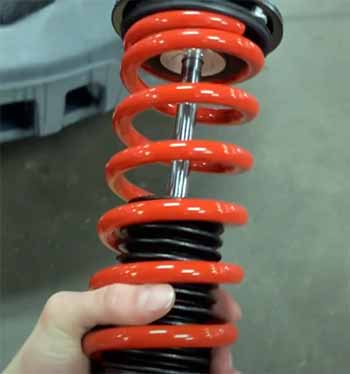
FAPO’s another budget contender that caught my eye, hovering around $600-$700 like Godspeed.
I test-drove a friend’s Civic with FAPO coilovers, and honestly, they felt pretty similar to mine at first.
Both give you that firm, sporty ride and adjustable height, but FAPO’s damping (16 levels, same as Godspeed) seemed a touch less precise—almost like the clicks didn’t make as big a difference.
Build-wise, FAPO’s steel shocks and springs looked solid, though I noticed a bit more rust after a wet season compared to my Godspeed set.
For me, Godspeed edges out slightly with better adjustability feel, but FAPO’s a close call if you snag a good deal.
- Godspeed Vs. MaXpeedingRods Coilovers
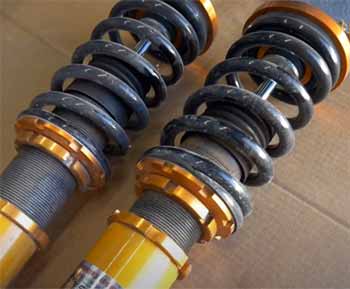
MaXpeedingRods is the wildcard I’ve seen all over forums, often priced even lower than Godspeed—think $500-$650.
I borrowed a buddy’s Mazda 3 with their coilovers for a weekend, and I’ll say this: they’re stiff as heck.
The ride was harsher than my Godspeed setup, even on the softest setting, and the 24 damping levels felt more like a marketing flex than a real perk—past 10 clicks, I barely noticed a change.
They’re dirt-cheap and get the job done for a slammed look, but Godspeed wins for me on ride quality and durability vibes.
MaXpeedingRods felt flimsier, and I’d worry about them lasting past a couple of hard years.
- Godspeed Vs. BC Coilovers
BC Coilovers (like the BR series) are the big brother here, running about $1,000-$1,200, and I’ve felt the difference in a pal’s Subaru. The ride’s smoother and more polished—those 32 damping levels actually let you fine-tune between cushy and razor-sharp, unlike Godspeed’s simpler 16-step setup.
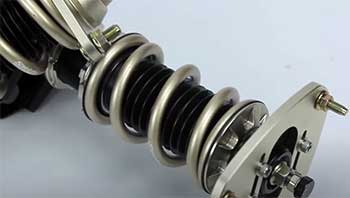
BC’s monotube design is beefier too, and they’re rebuildable, which is huge if you’re planning a long-term relationship with your car.
My Godspeed set handles great for the price, but BC feels like a premium upgrade—less compromise on comfort and more confidence on a track.
If I had the extra cash and wanted longevity, I’d lean BC, but Godspeed keeps me grinning for less.
Each of these matchups tells a story. Godspeed sits comfy in that sweet spot of value and performance for me—FAPO’s close but lacks finesse, MaXpeedingRods sacrifices too much for the low price, and BC’s the champ if you’re ready to splurge.
It’s all about what you need and what your wallet can handle, but my Godspeed coilovers have proven they can hang with the crowd without breaking the bank.
Frequently Asked Questions (FAQ)
Got questions? I’ve got answers based on my time with Godspeed and some digging around.
The Maxx line—like the Mono Maxx I’ve heard folks rave about—is a step up from my MonoSS. They’re built for heavier track use with inverted front shocks for better rigidity, and some even have 40 damping levels. From what I’ve seen, they’re solid for the price (around $1,000) if you’re pushing your car harder than I do. Still budget-friendly, just with more oomph for enthusiasts.
Godspeed’s based in California, but the parts come from Taiwan or China, depending on the model. My MonoSS feels like a Taiwanese job—decent quality, nothing fancy. The design and assembly happen in the U.S., which gives me some confidence, but they’re not hiding the overseas manufacturing. It’s par for the course at this price point.
They can be! On full soft, mine are firmer than stock but not brutal—think “sporty” rather than “spine-shattering.” Crank them to full stiff, and it’s go-kart territory—great for carving corners, less so for pothole city. You’ve got wiggle room to find your vibe, but they’re not plush like a luxury ride.
Tough to call without a crystal ball, but pricier brands like KW or Bilstein have a rep for going the distance—think 50,000+ miles with proper care. Godspeed’s more of a wildcard; mine are holding up at 10,000 miles, but some report blowouts sooner. For longevity, I’d bet on rebuildable options like BC Racing over budget picks like mine.
Conclusion: Godspeed Coilovers Are Worth A Shot
So, there you have it—my unfiltered take on Godspeed coilovers. They’ve turned my Civic into a tighter, more thrilling ride without emptying my wallet, and that’s a win in my book.
If you’re after an affordable way to drop your car and tweak its personality, I say go for it. They’re not perfect, but for the price, they deliver where it counts.
Grab a set, play with the settings, and see what they can do for you—you might just end up as hooked as I am!
